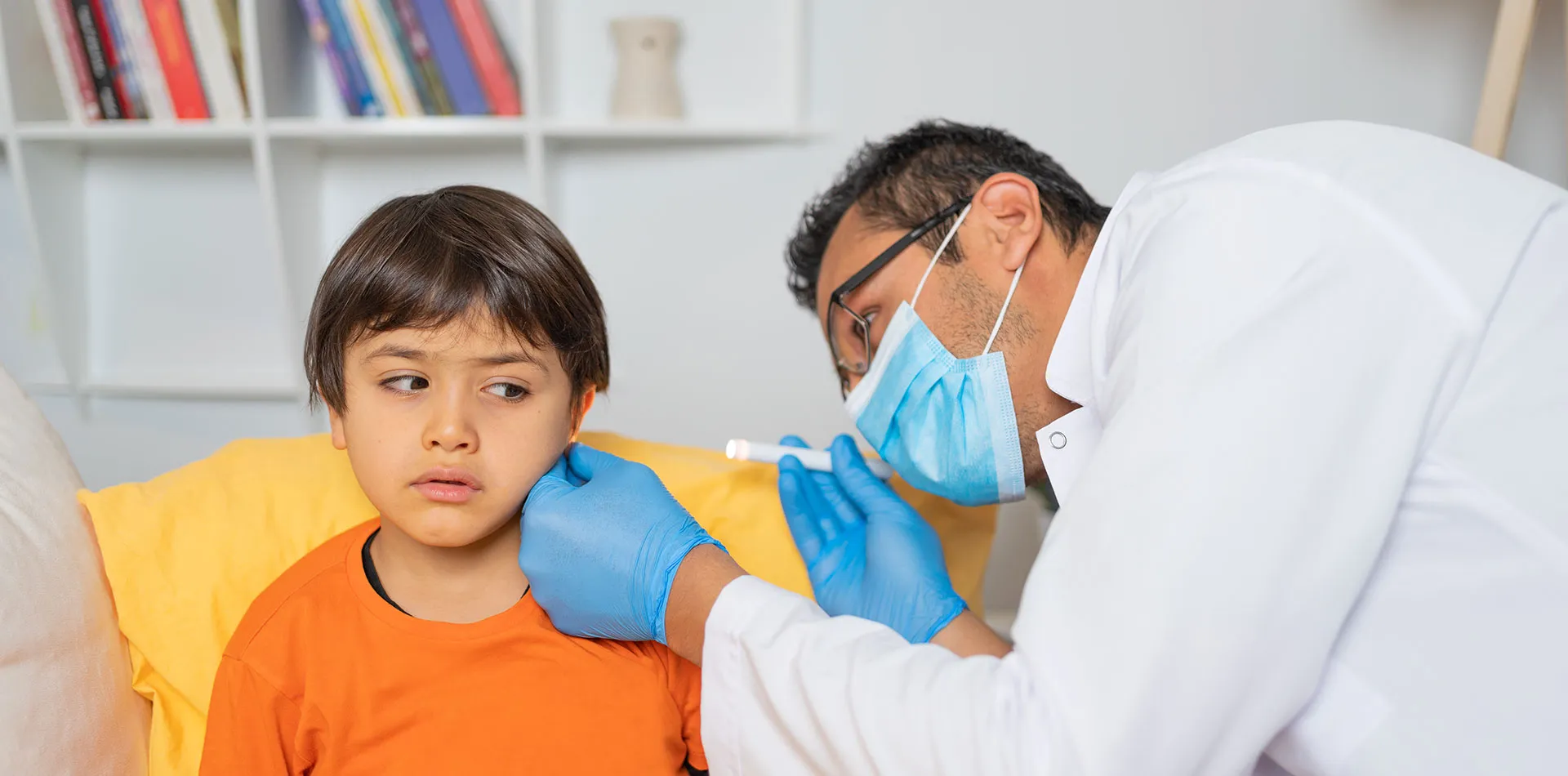
Mucoid otitis media (OSM) is a chronic inflammation of the lining of the middle ear that manifests as an effusion of fluid trapped behind the eardrum that lasts for more than 3 months. It affects nearly 20% of children under 2 and 16% under 5. Bilateral in 85% of cases, it resolves spontaneously in the vast majority of cases. In children who will develop chronic OSM, otological monitoring must be systematic and rigorous because OSM is considered the hub of all chronic otitis processes.
All designate the presence of liquid behind the eardrum.
The difference is regarding the consistency of the liquid, from very thin (serous) to very thick (mucous) with a range of different combinations in between.
Why does my child have mucoid otitis media?
• Adenoids are considered the first cause and the main risk factor for OSM through their size and the extent of the infection they are the site of.
• Other causes of nasal dye permeability or obstruction are enlarged turbinates, deviation of the nasal septum, and in rare cases a tumor. Eustachian dysfunction is also invoked in children with a craniofacial malformation, velopalatine or velar division, bifid uvula, craniostenosis or Down’s syndrome.
• Some chronic respiratory diseases such as ciliary dyskinesias, as well as immune deficiencies increase the risk of developing mucoid otitis media
• Inflammation after acute otitis media has been shown to play a role in the onset and recurrence of OSM.
• Other risk factors such as prematurity, collectivity, iron deficiency, allergy, pollution as well as passive smoking.
- Hearing loss is the usual mode of disclosure. When it is bilateral (in 85% of cases) and greater than 25 - 30 decibels, the child might increase the volume of the television, not respond when called, hear poorly over the phone, confuse certain phonemes, and can even have speech delay
- Ear pain takes many forms. Fleeting, lasting a few minutes or a few hours, it very often accompanies episodes of nasopharyngitis. In the form of "ear blockages or tensions", it wakes the child up at night, but very quickly, after a cry, a blowing nose, or a yawn, the child promptly goes back to sleep.
- The discovery can be accidental between episodes of acute otitis media (AOM). This picture is very specific to the infant, but to confirm the diagnosis of underlying OSM it is essential to examine the child's eardrum outside of the infectious episode.
- Among other symptoms, older children report a feeling of full ears, muffled noise, blockage, fluid shifting, and dizziness.
Otoscopy and audiometry are necessary to confirm the diagnosis and assess the level of the hearing loss.
The effusion usually heals spontaneously in less than three months. Monitoring is therefore necessary. If the effusion lasts more than 3 months, we may suggest to put "ear tube" sometimes associated with the removal of adenoids.
This procedure allows the child to hear better by draining the fluid that stagnates in the middle ear and that is the cause of hearing loss. In practice, this surgery consists of inserting hollow tubes (yoyos) under general anesthesia through the tympanic membrane. Their role is to allow permanent ventilation of the middle ear cavities by making a "short circuit" between the duct and the eardrum. In general, ear tubes naturally extrude after 4 months to 2 years.
Adenoids are tissue located behind the nose and at the top of the palate. An enlargement eventually obstructs the Eustachian tubes (the canal connecting the back of the throat to the ears) and causes ear infections by the accumulation of fluid in the ear.
Adenoidectomy is the removal of adenoids. The nasopharyngeal mechanical obstruction and the bacterial reservoir responsible for the self-sustaining chronic inflammation are removed
Yes, an audiometry test within 6 months to make sure the operation is successful.
Whatever the proposed treatment, the eardrum and hearing must be checked regularly (with or without treatment). The child must be followed until complete and lasting resolution of OSM so as not to ignore the complications.
Patient Experience